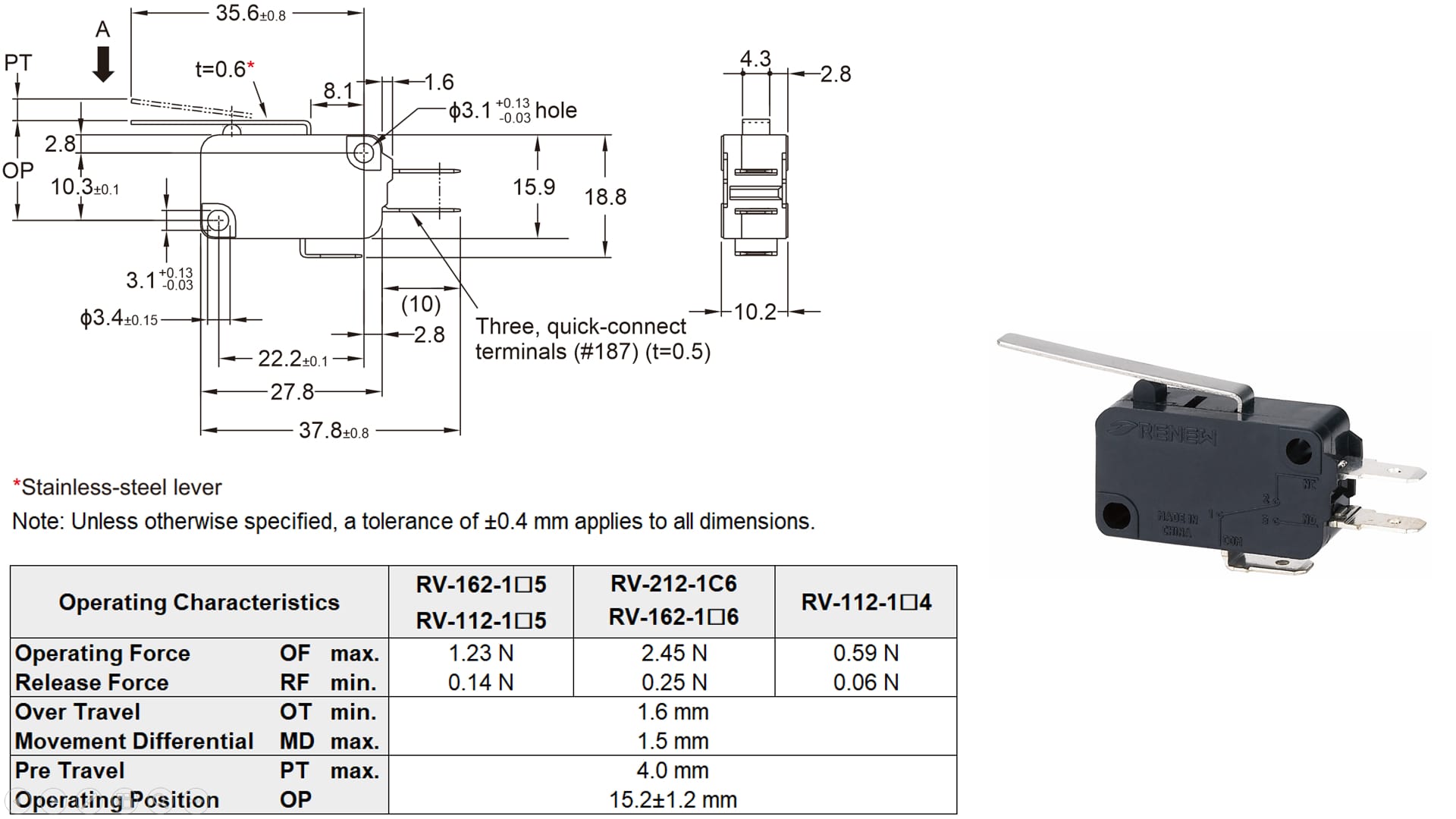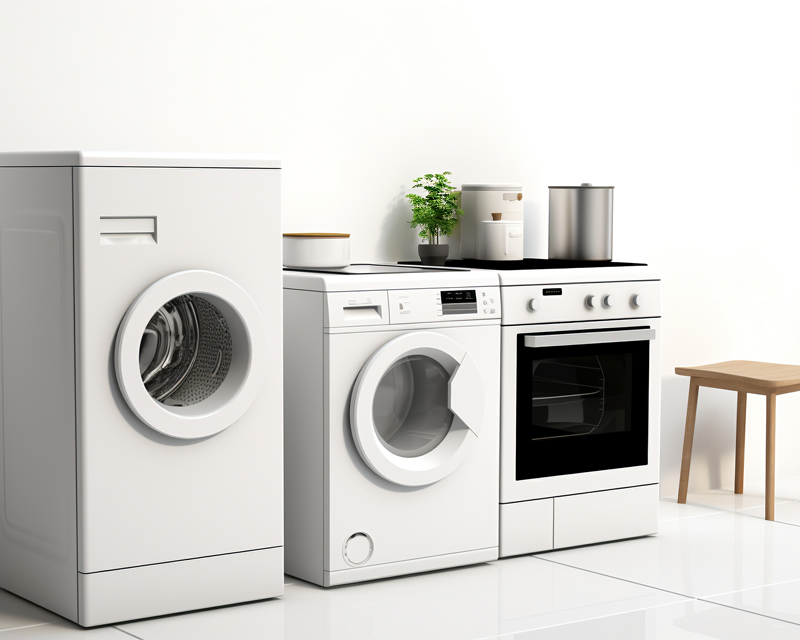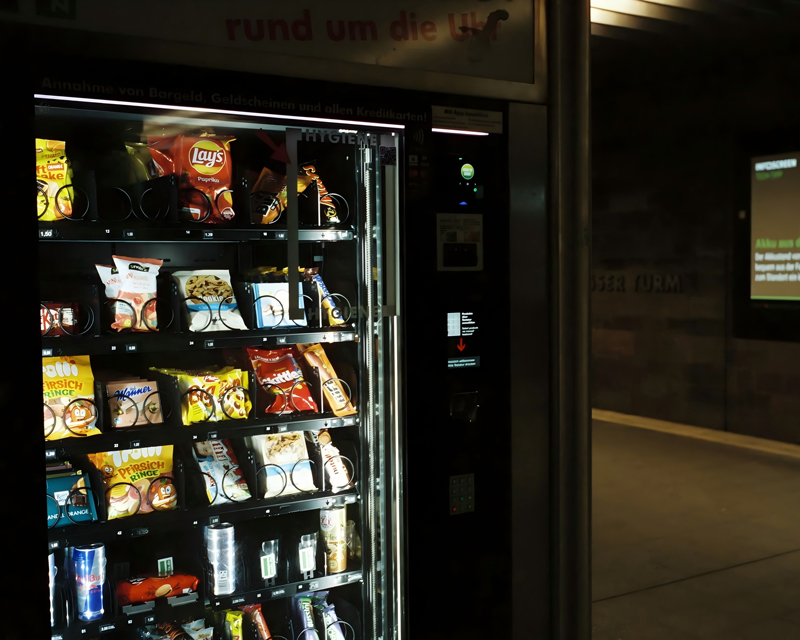Hinge Lever Miniature Basic Switch
-

High Precision
-

Enhanced Life
-

Widely Used
Product Description
The hinge lever actuator switch offers extended reach and flexibility in actuation. The lever design allows for easy activation and is perfect for applications where space constraints or awkward angles make direct actuation difficult. It is commonly used in household appliances and industrial controls.
Dimensions and Operating Characteristics

General Technical Data
|
RV-11 |
RV-16 |
RV-21 |
|||
| Rating (at resistive load) | 11 A, 250 VAC | 16 A, 250 VAC | 21 A, 250 VAC | ||
| Insulation resistance | 100 MΩ min. (at 500 VDC with insulation tester) | ||||
| Contact resistance | 15 mΩ max. (initial value) | ||||
| Dielectric strength (with a separator) | Between terminals of the same polarity | 1,000 VAC, 50/60 Hz for 1 min | |||
| Between current-carrying metal parts and ground and between each terminal and non-current-carrying metal parts | 1,500 VAC, 50/60 Hz for 1 min | 2,000 VAC, 50/60 Hz for 1 min | |||
| Vibration resistance | Malfunction | 10 to 55 Hz, 1.5 mm double amplitude (malfunction: 1 ms max.) | |||
| Durability * | Mechanical | 50,000,000 operations min. (60 operations/min) | |||
| Electrical | 300,000 operations min. (30 operations/min) | 100,000 operations min. (30 operations/min) | |||
| Degree of protection | IP40 | ||||
* For testing conditions, consult your Renew sales representative.
Application
Renew's miniature micro switches are widely used in consumer and commercial equipment such as a variety of industrial equipment, facilities, office equipment, and home appliances. These switches are mainly used to implement functions such as position detection, opening and closing detection, automatic control and safety protection. They play an important role in many fields, such as monitoring the position of mechanical components in automated production lines, detecting the presence or absence of paper in office equipment, controlling the switching status of power supplies in household appliances, ensuring safe operation of equipment. The following are some common or potential application scenarios.

Home Appliances
Sensors and switches in home appliances are widely used in various types of home appliances to detect the status of their doors. For example, a microwave door interlock switch ensures that the microwave only operates when the door is fully closed, thereby preventing microwave leakage and ensuring user safety. In addition, these switches can also be used in home appliances such as washing machines, refrigerators and ovens to ensure that the device does not start when the door is not closed properly, further improving the safety and reliability of home appliances.

Office Equipment
In office equipment, sensors and switches are integrated into large office equipment to ensure the proper operation and functionality of these devices. For example, switches can be used to detect when a printer lid is closed, ensuring that the printer does not operate when the lid is not closed properly, thus avoiding equipment damage and printing errors. In addition, these switches can also be used in equipment such as copiers, scanners, and fax machines to monitor the status of various components of the equipment to ensure efficient and safe operation.

Vending Machine
In vending machines, sensors and switches are used to detect whether the product has been successfully dispensed. These switches can monitor vending machine shipments in real time, ensuring the accuracy and reliability of each transaction. For example, when a customer purchases a product, the switch detects whether the product has successfully dropped to the pickup port and sends a signal to the control system. If the product is not successfully shipped, the system will automatically perform compensation or refund operations to improve user experience and vending machine service quality.













